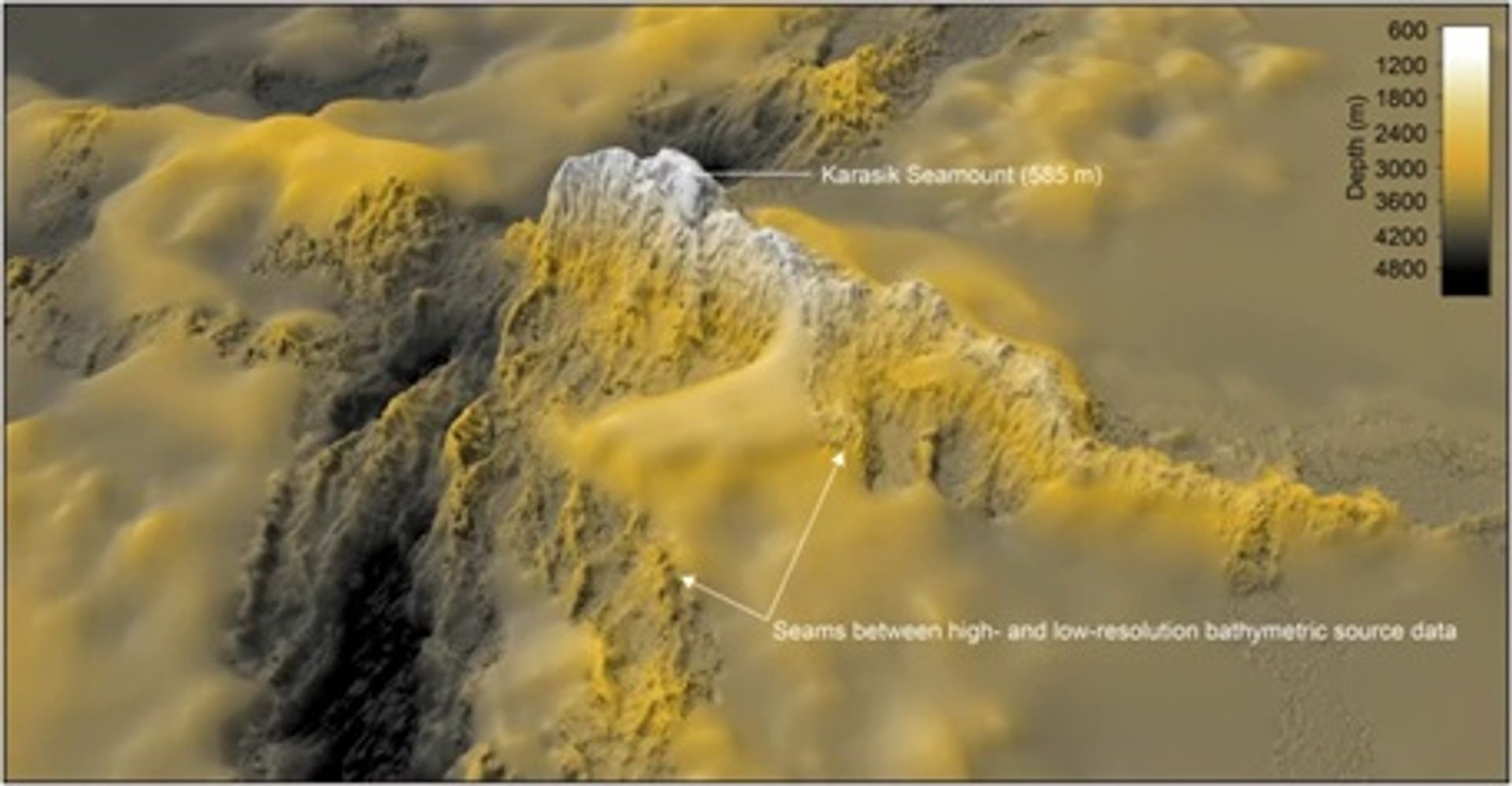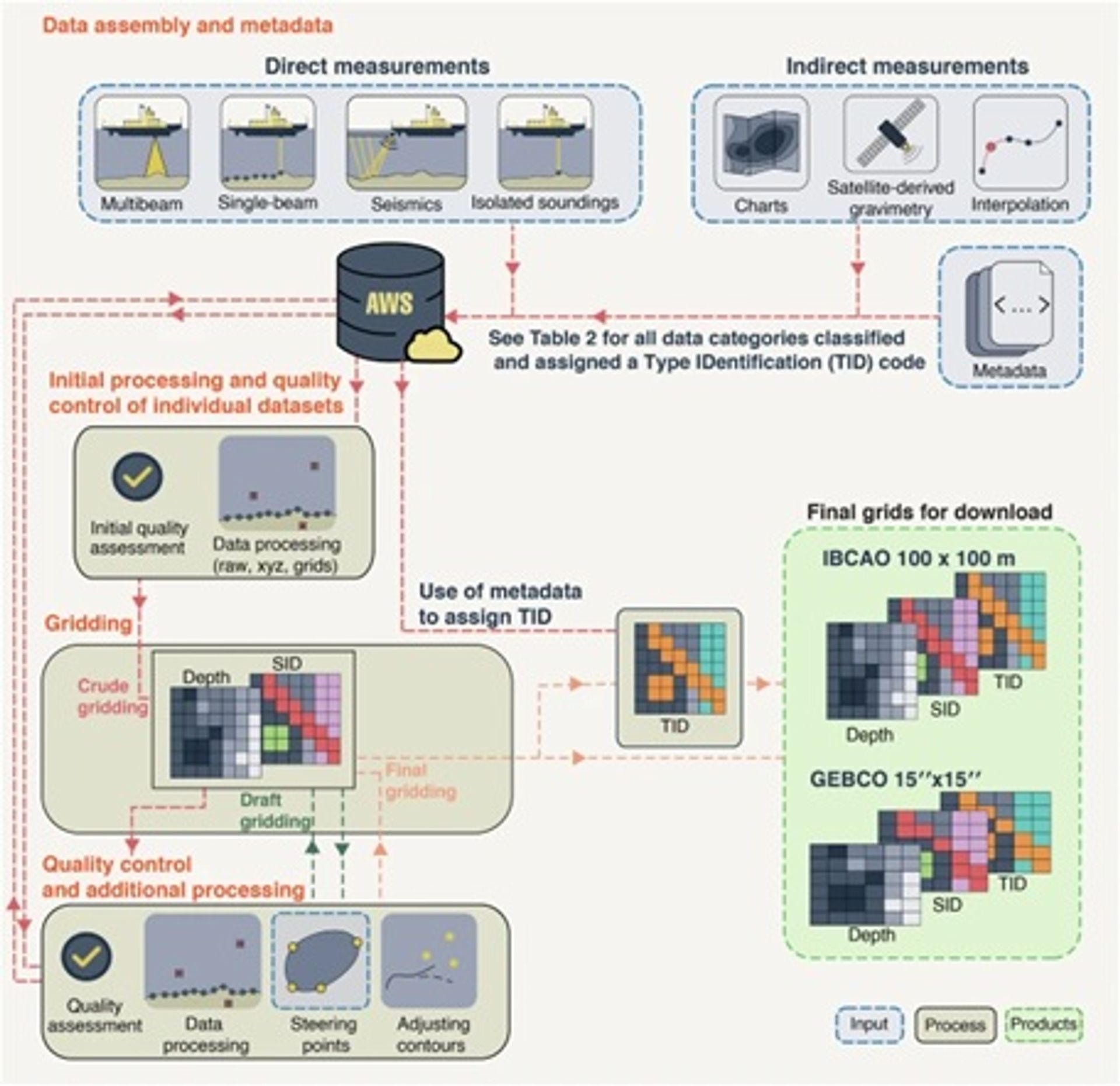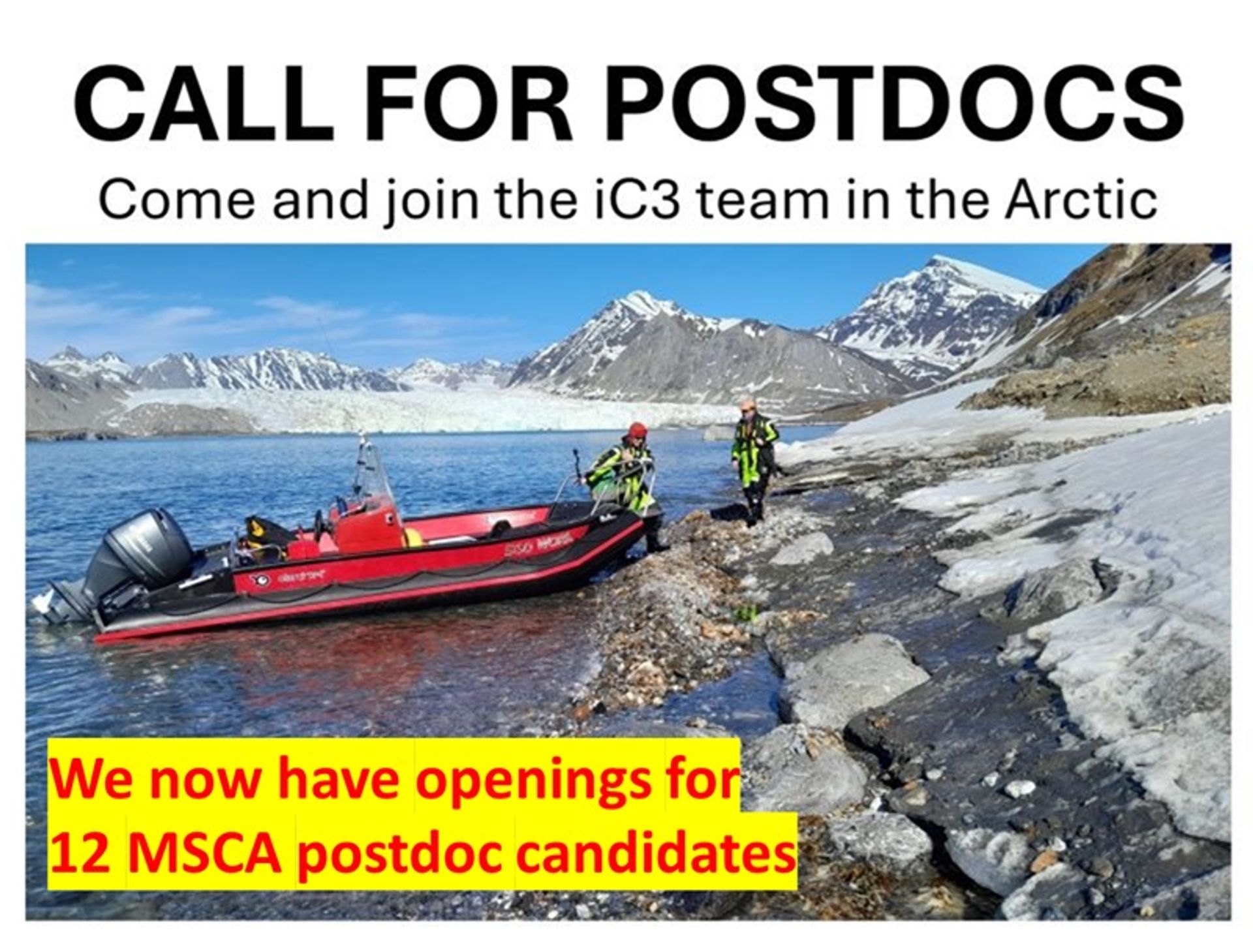Plumbing the depths: Improving the International Bathymetric Chart of the Arctic Ocean (IBCAO)
February 20th, 2025
Knowledge about seafloor depth, or bathymetry, is crucial for various marine activities including scientific research. However, mapping the central Arctic Ocean is challenging due to the presence of perennial sea ice, which limits data collection to icebreakers, submarines, and drifting ice stations.
The International Bathymetric Chart of the Arctic Ocean (IBCAO) was initiated in 1997 with the goal of updating the Arctic Ocean bathymetric portrayal.
.
Mapping the Arctic Ocean
An international team, including several researchers from the iC3 Polar Research Hub and its host university in Tromsø, contributed to a new, updated version of the chart that offers a resolution of 100 × 100 meter grid cells.
To date, over 25% of the Arctic Ocean has been mapped with individual depth soundings.
IBCAO Version 5.0 represents significant advancements in data compilation and computing techniques. The chart results from collaboration among scientists and institutions, integrating around 1,400 datasets from 78 different sources.

Image: Langseth Ridge (credit: Nature Scientific Data)
The research team employed innovative technologies and methods to overcome these obstacles. By utilizing satellite data and modern sonar equipment, they were able to gather critical information about ocean depth, even in difficult conditions.
“The integration of diverse datasets was crucial for enhancing the resolution and accuracy of the bathymetric model,” explained Stefan Bünz, iC3 researcher and co-author of the study. “Utilizing advanced sonar technology has significantly improved data collection efficiency.”

Image: IBCAO 5 methodology (credit: Nature Scientific Data)
.
One chart, many useful applications
The improved chart will help scientists studying climate change to understand how ocean currents and temperatures are influenced by the ocean floor's shape.
Additionally, the chart is crucial for the assessment of submarine hazards in a changing Arctic as well as for studying marine life, as seabed features can affect species distribution and interactions.
iC3’s Andreia Plaza-Faverola, who also contributed to the study, said:
“Integrating marine seismic methods with bathymetric data is essential for accurate subsurface characterization, which is critical for understanding how the cryosphere has interacted with the oceans and affected geological processes, for example carbon transport and the stability of continental margins.”
The data from this project will be used to guide future research and conservation efforts.
.
The publication “The International Bathymetric Chart of the Arctic Ocean Version 5.0” has been published open access in Nature Scientific Data. The data are available in open access on the General Bathymetric Chart of the Oceans website.
The following iC3 and Tromsø university researchers contributed to the data collection: Stefan Bünz, Andreia Plaza-Faverola, Tine Rasmussen, Karin Andreassen, Monica Winsborrow, Henry Patton, and Giuliana Panieri. All were part of the university’s former Centre for Arctic Gas Hydrate, Environment and Climate (CAGE) at the time. In total, the university contributed 17 multibeam datasets from CAGE cruises.

Both Andreia Plaza-Faverola and Stefan Bünz are currently looking for postdoctoral researchers to join their teams in Tromsø.
· Andreia is seeking a candidate with expertise in polar marine geology.
· Stefan Bünz leads the iC3 team developing new modelling and measurement technologies for polar research. He is looking for a candidate who wants to work on hot water drilling technology, remote data capture systems, new imaging technologies, or novel nutrient and carbon sensors.
Interested candidates should email Andreia or Stefan their CV and a brief outline of their proposed research project.